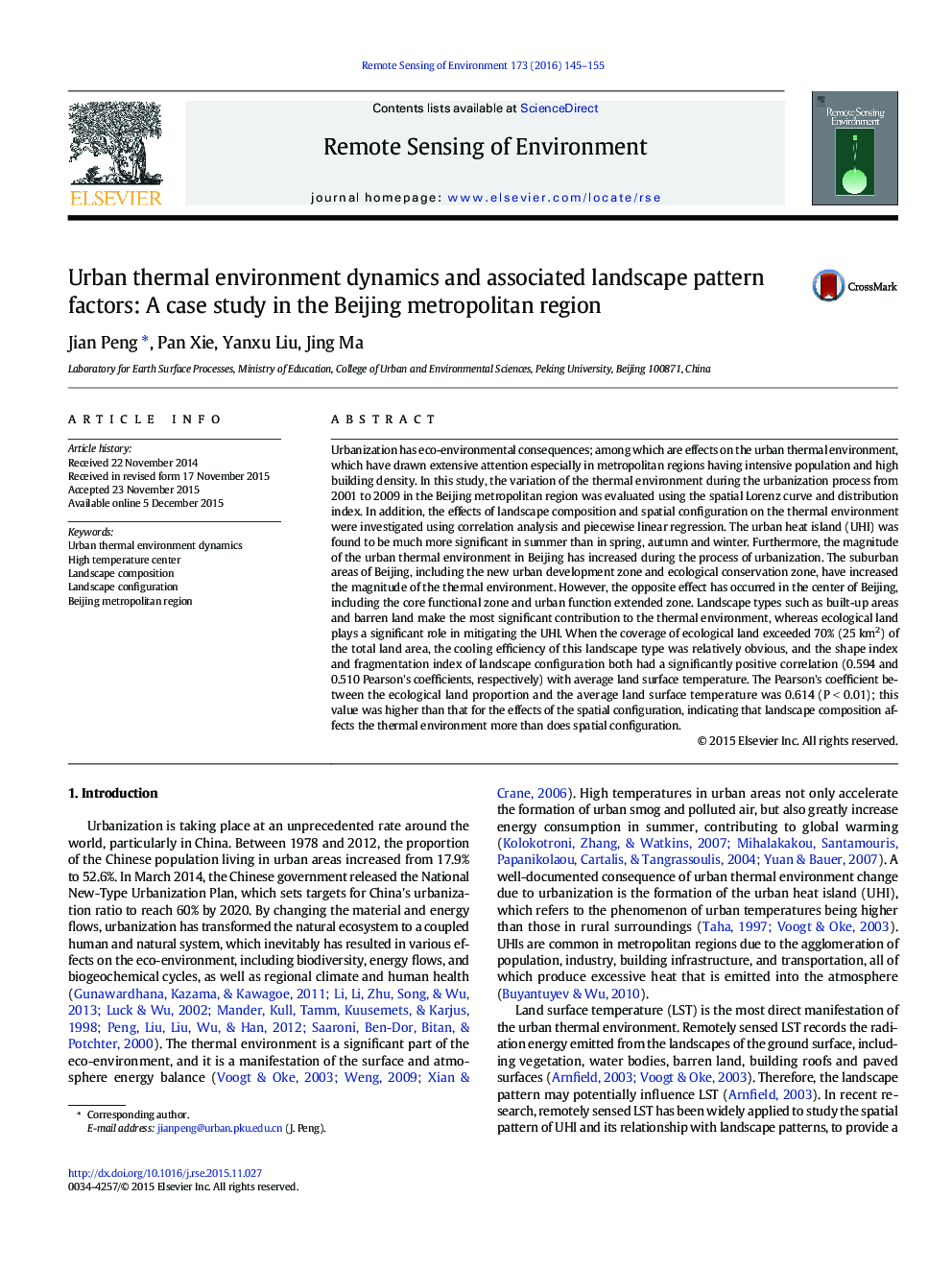| کد مقاله | کد نشریه | سال انتشار | مقاله انگلیسی | نسخه تمام متن |
|---|---|---|---|---|
| 6345657 | 1621227 | 2016 | 11 صفحه PDF | دانلود رایگان |
عنوان انگلیسی مقاله ISI
Urban thermal environment dynamics and associated landscape pattern factors: A case study in the Beijing metropolitan region
ترجمه فارسی عنوان
دینامیک محیط های حرارتی شهری و عوامل مرتبط با الگوی چشم انداز: مطالعه موردی در منطقه شهری پکن
دانلود مقاله + سفارش ترجمه
دانلود مقاله ISI انگلیسی
رایگان برای ایرانیان
کلمات کلیدی
دینامیک محیط زیست محیطی شهری، مرکز درجه حرارت بالا، ترکیب منظره، پیکربندی چشم انداز، منطقه شهری پکن،
موضوعات مرتبط
مهندسی و علوم پایه
علوم زمین و سیارات
کامپیوتر در علوم زمین
چکیده انگلیسی
Urbanization has eco-environmental consequences; among which are effects on the urban thermal environment, which have drawn extensive attention especially in metropolitan regions having intensive population and high building density. In this study, the variation of the thermal environment during the urbanization process from 2001 to 2009 in the Beijing metropolitan region was evaluated using the spatial Lorenz curve and distribution index. In addition, the effects of landscape composition and spatial configuration on the thermal environment were investigated using correlation analysis and piecewise linear regression. The urban heat island (UHI) was found to be much more significant in summer than in spring, autumn and winter. Furthermore, the magnitude of the urban thermal environment in Beijing has increased during the process of urbanization. The suburban areas of Beijing, including the new urban development zone and ecological conservation zone, have increased the magnitude of the thermal environment. However, the opposite effect has occurred in the center of Beijing, including the core functional zone and urban function extended zone. Landscape types such as built-up areas and barren land make the most significant contribution to the thermal environment, whereas ecological land plays a significant role in mitigating the UHI. When the coverage of ecological land exceeded 70% (25Â km2) of the total land area, the cooling efficiency of this landscape type was relatively obvious, and the shape index and fragmentation index of landscape configuration both had a significantly positive correlation (0.594 and 0.510 Pearson's coefficients, respectively) with average land surface temperature. The Pearson's coefficient between the ecological land proportion and the average land surface temperature was 0.614 (PÂ <Â 0.01); this value was higher than that for the effects of the spatial configuration, indicating that landscape composition affects the thermal environment more than does spatial configuration.
ناشر
Database: Elsevier - ScienceDirect (ساینس دایرکت)
Journal: Remote Sensing of Environment - Volume 173, February 2016, Pages 145-155
Journal: Remote Sensing of Environment - Volume 173, February 2016, Pages 145-155
نویسندگان
Jian Peng, Pan Xie, Yanxu Liu, Jing Ma,
